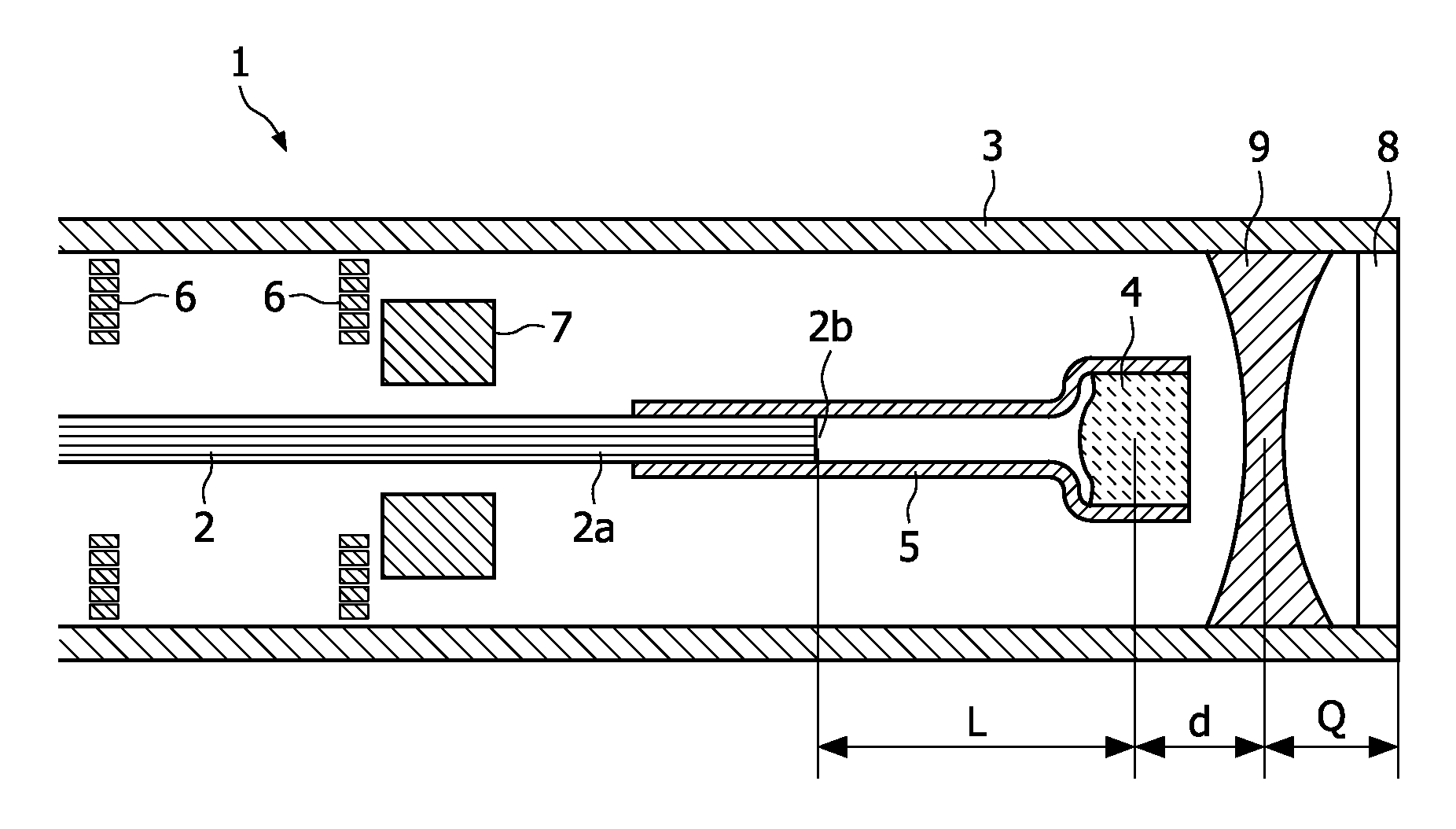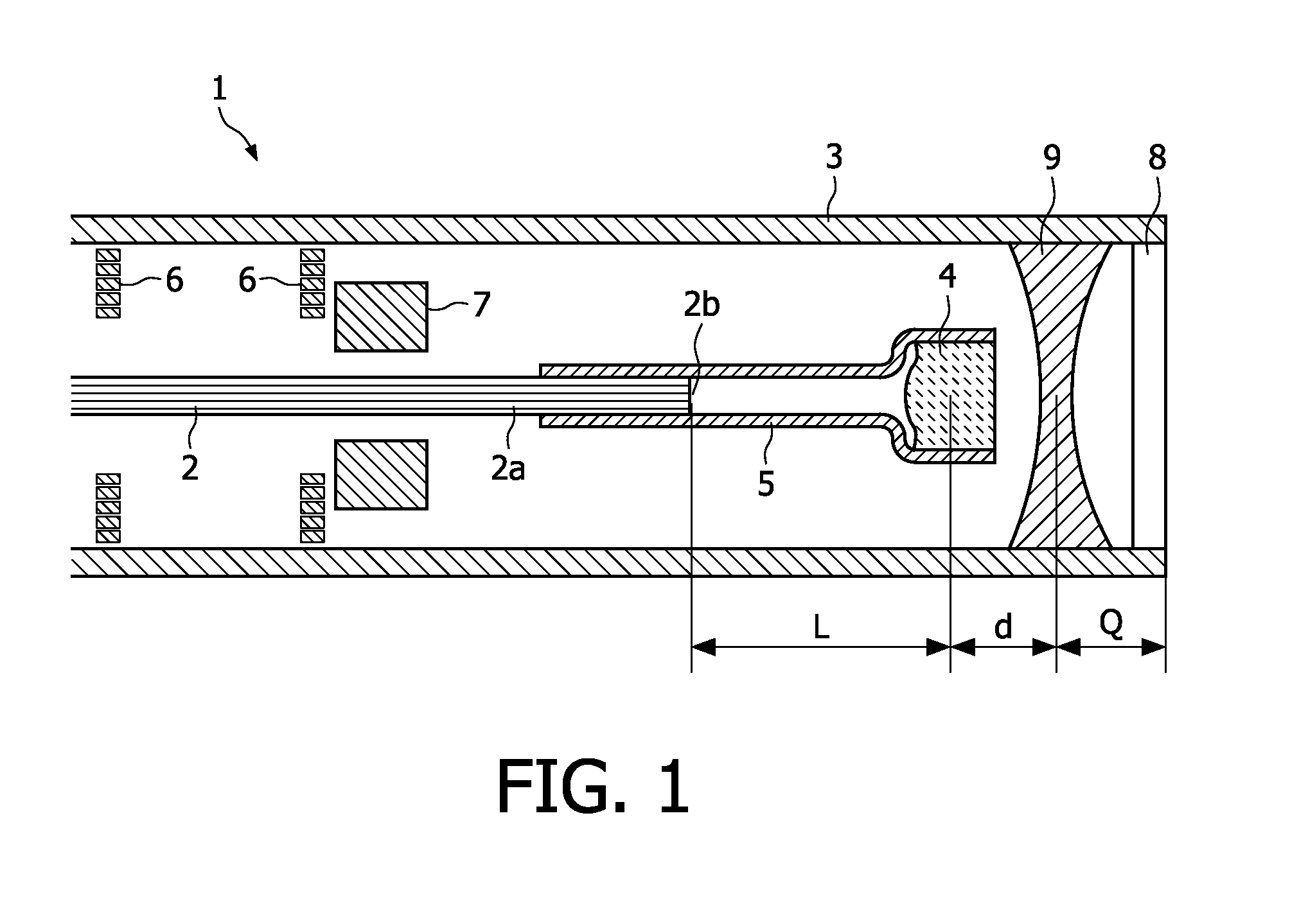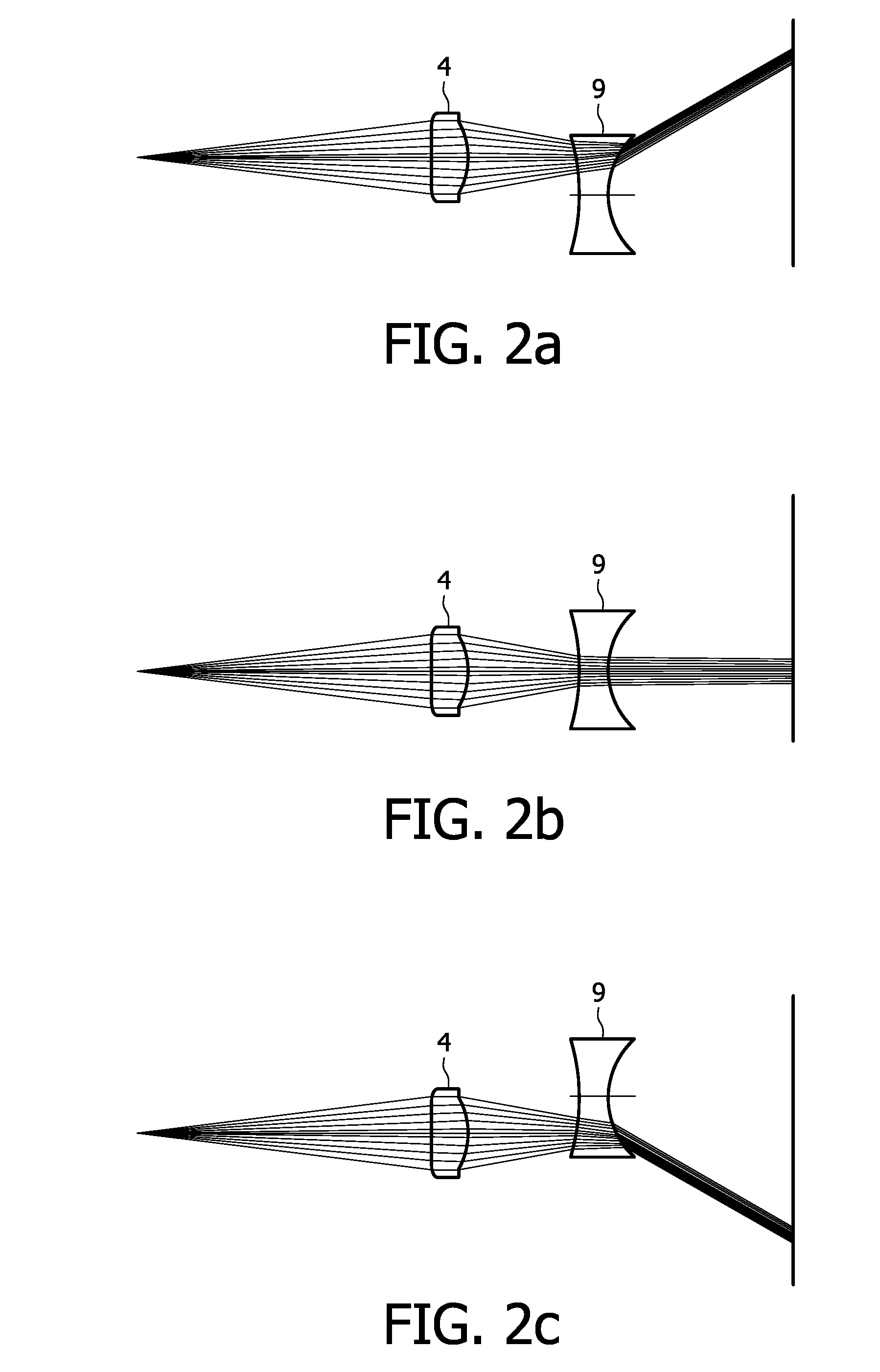Optical fiber scanning probe
a scanning probe and optical fiber technology, applied in the field of optical fiber scanning probes, can solve the problems of inconvenient production of disposable components, limited resolution, and far from optimal guidance methods, and achieve the effect of low cos
- Summary
- Abstract
- Description
- Claims
- Application Information
AI Technical Summary
Benefits of technology
Problems solved by technology
Method used
Image
Examples
Embodiment Construction
[0047]FIG. 1 shows a schematic cross-sectional drawing of an optical scanning probe according to the present invention. The optical probe 1 comprises an outer housing 3 holding an optical guide 2 with a first lens system 4 fastened at its distal end, preferably in a mechanical manner such as by an intermediate mount 5. The mount 5 holds the position of the distal end portion 2a of the optical guide 2 and the first lens system 4 in a fixed position relatively to each other by keeping the first lens system 4 centered on the longitudinal axis of the optical guide 2. The distance L between the optical exit 2b of the optical guide 2 and the first lens system 4 is typically significantly larger than a core diameter (df) of the optical guide 2.
[0048]The first lens system 4, which is rigidly coupled to the distal end portion of the optical guide 2a focus light coupled out from the optical guide 2. In FIG. 1, the first lens system is shown as a single lens for reason of clarity. The first le...
PUM
 Login to View More
Login to View More Abstract
Description
Claims
Application Information
 Login to View More
Login to View More - R&D
- Intellectual Property
- Life Sciences
- Materials
- Tech Scout
- Unparalleled Data Quality
- Higher Quality Content
- 60% Fewer Hallucinations
Browse by: Latest US Patents, China's latest patents, Technical Efficacy Thesaurus, Application Domain, Technology Topic, Popular Technical Reports.
© 2025 PatSnap. All rights reserved.Legal|Privacy policy|Modern Slavery Act Transparency Statement|Sitemap|About US| Contact US: help@patsnap.com



